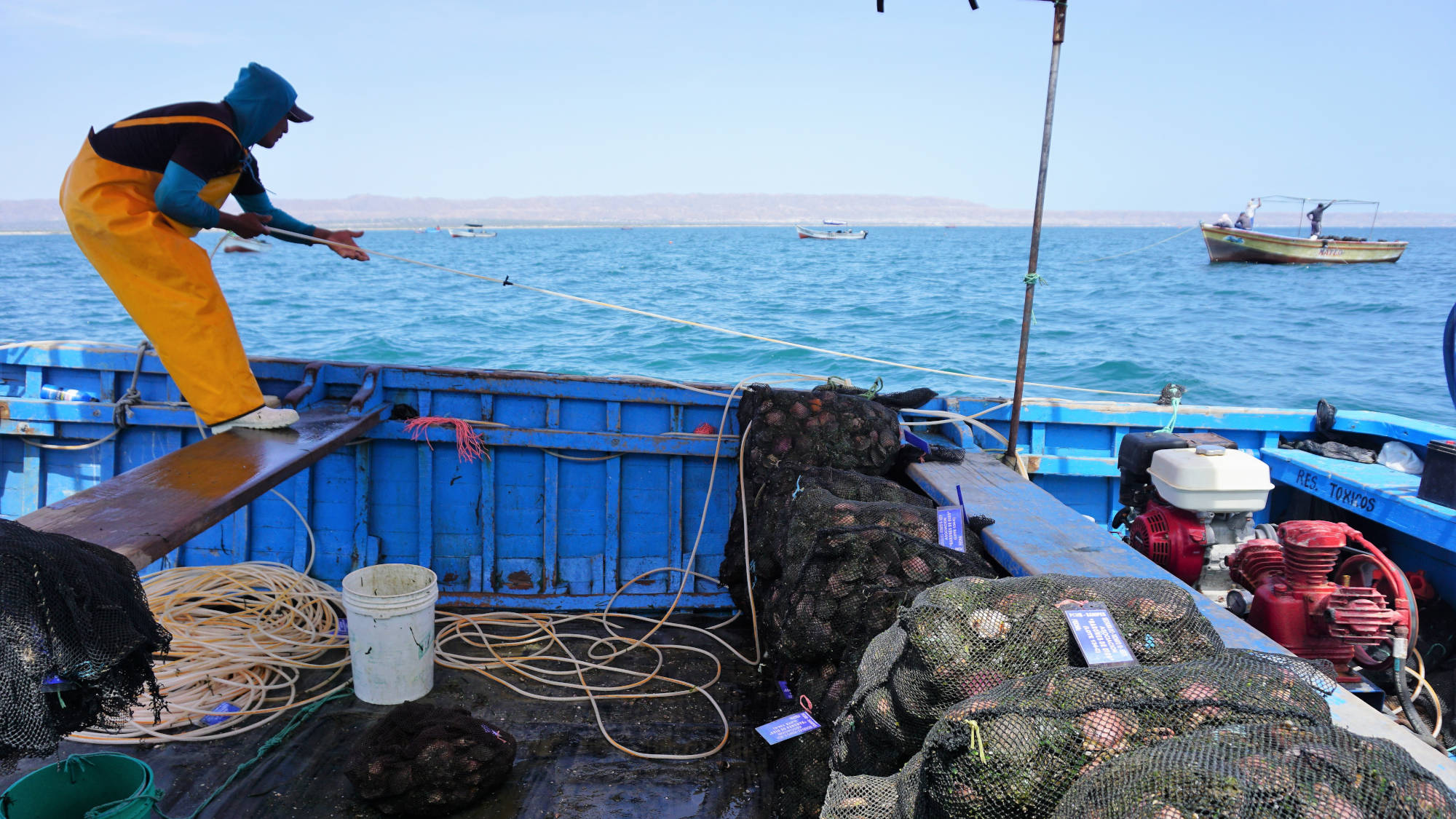
© Michael Flitner
Adaptation or Tipping Over?
“Humboldt Tipping” project develops sustainable coastal management for Peru
The Humboldt Current with its upwelling system off the Peruvian coast in the Pacific is one of the most productive fishing regions on earth. But intensive commercial exploitation coupled with the consequences of global warming could cause this biodiversity hotspot to collapse in the long term – with tangible consequences for the rest of the world. A project involving the University of Bremen has investigated the dangers posed by possible tipping points and researched what prerequisites for a sustainable use of resources would be. The team is now presenting its key findings as part of a virtual exhibition.
On the Peruvian coast, worlds that could hardly be more different literally collide. Along the shoreline, a wide strip of desert-like nature stretches right next to the ocean, where only the most hardened drought-resistant species can hold their own. In the ocean, it is quite the contrary: The Pacific off the coast of Peru is teeming with marine life. Whales, sharks, sea lions, seabirds, and countless schools of fish frolic here.
This direct juxtaposition of dry desert and wet paradise is caused by the interplay of ocean currents and wind. The mighty Humboldt Current flows along the West coast of South America, transporting cold, nutrient-rich water from the Antarctic northwards towards the equator. In addition, trade winds from the East blow over the land, meet the ocean, and push the surface water that has been warmed by the sun to the West, out into the open ocean. Cold seawater moves in from the depths and fills the gap. The upwelling deep water is rich in nutrients, which means that vast quantities of unicellular algae thrive in the light-flooded zone near the surface. This phytoplankton provides the food base for the highly productive marine habitat. Land dwellers, however, are left behind: As the cold upwelling water off the Peruvian coast makes it difficult for clouds to form in the air above, there is usually no rain – on land either.
Since there is little agriculture possible in the coastal desert, locals have always turned their attention to the treasures of the sea. Every year, the Peruvian fishers catch several million tons of seafood from the Pacific, around eight percent of the global catch – most of it anchovy. Most of the catch is processed into fishmeal and exported to China and Europe, where it is then fed to fish and shrimp in salmon farms and other aquaculture operations. This means that even far-away regions depend on the fate of this biodiversity hotspot off the Peruvian coast, which is already wavering because of climate change.
In the Humboldt Tipping project funded by the German Federal Ministry of Education and Research (BMBF), researchers from Peru, Kiel, Hamburg, and Bremen spent four years investigating the interplay between ecology, community, and economy in the Humboldt upwelling system and looking for possible tipping points. Together with the local community, the researchers investigated adaptation strategies to the changing environmental conditions. From Bremen, the Leibniz Centre for Tropical Marine Research (ZMT) and the artec Sustainability Research Center at the University of Bremen are involved in the project. artec spokesperson Michael Flitner is in charge of Work Package 7: Stakeholder Engagement and Governance Strategies. It focuses on the involvement of local and national stakeholders. To this end, group discussions with fishers, seafarers, tourism companies, and members of public and private institutions were organized. On the one hand, this fosters an understanding of the local socio-ecological system. On the other hand, only an intensive dialogue between all stakeholders allows for rules for a sustainable use of the coastal ocean to be established.
© Humboldt Tipping
At the end of the first project phase, the researchers have now designed a virtual exhibition. It presents the key results and is freely accessible. In the second phase of the project, the researchers will further specify possible adaptation strategies in the context of global environmental changes.
The virtual exhibition features a schematic 3D model of the Humboldt upwelling system in front of Peru as it currently appears. You can access explanatory texts and videos that present individual aspects such as anchovy fishing or tourism by clicking on the corresponding symbols. The highlight: If you activate the “Doom” button, the whole system tips over into a quite possible, gloomy future with extreme climate change and overfishing. Here, the increase in water temperature has led to an expansion of oxygen-poor zones. The economically important anchovy stocks have collapsed. Instead, smaller fish species such as gobies or panama lightfish that thrive in warmer, low-oxygen conditions have become common. As these species do not live in large schools and are much harder to catch, fishing and the fishmeal industry are in a deep crisis.
If you activate the “Ideal” button, things look very different: It shows how prosperous the Peruvian coast could be if there were more climate protection and sustainable management of fishing and shellfish farming. Oxygen minimum zones have not increased. Anchovy stocks are protected by more marine conservation areas and reduced allowable catches. Additionally, anchovy is no longer primarily used for fishmeal, but for direct consumption by people. At the same time, biodiversity has increased and sustainable ecotourism has created new jobs that have compensated for job losses in the fishing industry.
The “Humboldt Tipping” virtual exhibition illustrates the dangers posed by possible tipping points and suggested solutions. Visit the exhibition:
https://virtex.humboldt-tipping.org/en/exhibition
Further information is available on the project website.